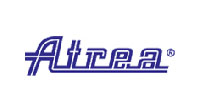The most important technical characteristics are heat energy efficiency, noise insulation and price.
Heat properties of the joinery are assessed by indicator called coefficient of heat transition. It is measured in W/m2К.
Joinery takes 25% from the building area but it causes 60% of the heat losses.
Coefficient of heat transition in joinery depends on three things: profile, glazed window and influence of the preceding area between the glass and the profile.
Profile takes nearly 30-35 % from the joinery and that's the percentage of its influence on the heat losses. In the case of aluminium joinery improvement of heat parameters happens through interruption of the thermal bridge while in the case of PVC joinery - through increase in the number of chambers and profiles width. Their increase is not very sufficient because it leads to insignificant improvement - about 0,2 W/m2К. This is due to the steel reinforcement inside the profile which is bad heat insulator. These unfavourable insulating properties could be compensated by filling in the profiles with plastic profiles and polyurethane foam.
What joinery to choose - aluminium or PVC?
You have to be sure that the company you choose produces both of the joineries. The answer is different and depends on where is the joinery (offices, stores, houses etc.), what colour you're looking for, what is the configuration of elements etc.
PVC joinery is recommended for the houses but if you want to glaze a terrace which is supposed to keep the washed clothes away from dust and dirt, sliding aluminium joinery is more rational decision.
In stores the glass doors and shop windows are preferred. Usually 10 mm glass is used there. That stultifies the use of PVC and AL thermo-profiles because 90-95 % of the surface is glass.
Specific colour decisions for the profiles are made of aluminium joinery with interrupted thermal bridge.
Last but not least are your preferences but when choosing have in mind that the heat insulation properties of PVC profiles are better than these of aluminium profiles with interrupted thermal bridge.
















